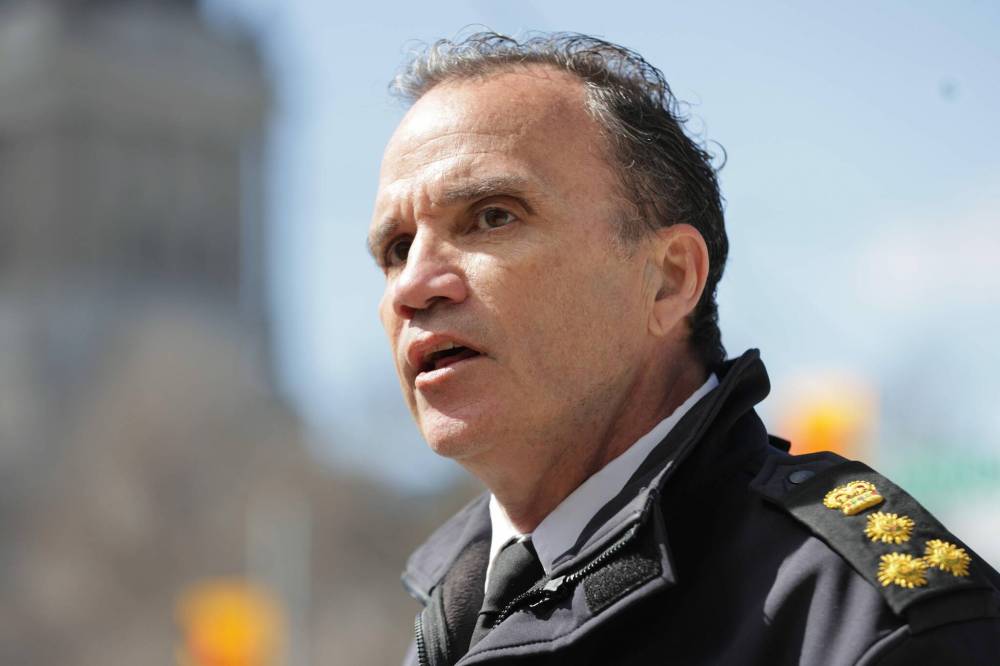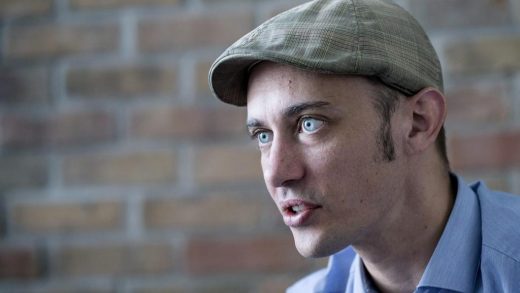
When someone ends up dead following an encounter with police, who should immediately control the narrative of what took place?
For Winnipeg police chief Danny Smyth, the answer is simple. Police should control it. That’s what he argued last week when commenting on the case of Elias Whitehead, a 37-year-old Indigenous man who died after being arrested by Winnipeg police in the West Broadway area.
In its initial press release, police said officers responded to the report of a man in distress running into traffic and acting erratically. “Attending officers located the male, and he was taken into custody. The male went into medical distress, was transported to hospital in critical condition, and was later pronounced deceased.”
RUTH BONNEVILLE / WINNIPEG FREE PRESS Winnipeg Police Chief Danny Smyth argues police should control the narrative when someone dies in a police encounter.
Soon afterwards, CBC Manitoba interviewed two eye-witnesses to what appeared to be the arrest and featured video they had taken, showing officers kneeing and repeatedly punching the man as he lay on the ground. The eye-witnesses said they were stunned by what they saw.
Smyth was critical of the media report, which he said “was interpreted through the narrow focus of these two people who had no first-hand experience with police use-of-force encounters.” He also said his department ought to have released more information about the incident in the first place, including Whitehead’s alleged resistance to being arrested. “In my view, this was a mistake because it allowed others to take control of the narrative.”
The police chief said it was the province’s Independent Investigation Unit (IIU), and not the CBC, which would establish whether police acted properly. But in his effort to re-assert control of the narrative, he offered some helpful advice.
“I am confident that the WPS members involved in this event were well trained, and will account for the actions they took, including the level of force used to control the situation,” he said.
In defending his officers, he neglected to say that the question of training and the appropriateness of police actions during “wellness checks” — which was how this call was initially classified — has been a matter of great controversy across Canada. He also forgot to mention that officers directly involved in such cases are not compelled to submit their notes or present themselves for interviews with the IIU. And in most cases, they don’t.
A Globe and Mail investigation earlier this year found that of the 145 officers under investigation over the previous five years in Manitoba, just 12 per cent agreed to co-operate fully with the IIU.
Smyth might also have acknowledged that the IIU had to take Winnipeg police to court in 2019 after the department refused to release notes from two cadets who were witnesses to a fatal Taser incident. Perhaps the cadets didn’t have sufficient experience with use of force encounters either.
It’s useful to recall how the Minneapolis police tried to control the narrative on the day George Floyd was killed in 2020. In its initial press release, it said while arresting Floyd on a minor charge police “were able to get the suspect into handcuffs and noted he appeared to be suffering medical distress.” It added: “At no time were weapons of any type used by anyone involved in this incident.”
That’s where matters might have stood had teenager Darnella Frazier not captured the scene on her phone and posted it online. It showed what the police press release covered up, that an officer pressed his knee against Floyd’s neck for more than nine minutes, while Floyd protested that he couldn’t breathe.
It wasn’t the only time officer Derek Chauvin had placed his knee across a suspect’s neck, but it was the first time it was captured on video. Frazier likely had no experience in use-of-force techniques, but she had the courage to take the video, which sparked outrage around North America and beyond.
Winnipeg has an unfortunate history in distorting the narrative when it comes to deadly force encounters, particularly when it involves Indigenous people. When Indigenous leader J.J. Harper was shot by police in 1988, the police chief at the time quickly exonerated his officer, blamed Harper for the shooting and denied racism was involved. But Manitoba’s Aboriginal Justice Inquiry came to a very different conclusion, blaming police for the incident and highlighting racism as a factor.
Three decades later, inquiry co-commissioner Murray Sinclair said he still lacks faith in the process of investigating fatal encounters with police. He said the IIU’s information comes from “what they’re told by the police” and “what they’re told by witnesses who are called by the police to give them reports.”
Research consistently shows Black and Indigenous people are disproportionately represented in fatal encounters. Police are usually the only witnesses, and charges against officers are rare.
Given the difficulty of investigating such cases in an unbiased and transparent way, it’s entirely appropriate for the media to seek out witnesses and independently investigate the use of police deadly force. If there is credible video evidence of the encounter, it needs to be made public. The only narrative that really matters, in the end, is the truth.
Cecil Rosner is a lifelong Winnipeg journalist, with lengthy stints at both the Winnipeg Free Press and the CBC. His new book, Manipulating the Message: How Powerful Forces Shape the News, launches Nov. 2 at McNally Robinson.


